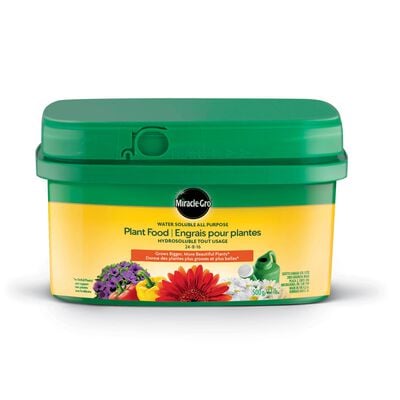
How to Grow, Care For & Harvest Swiss Chard
A Bold and Nutritious Choice
Long a staple of the famously healthy Mediterranean diet, Swiss chard's rich, earthy-tasting leaves deliver large doses of vitamins, minerals and fiber. Swiss chard is actually a member of the beet family, but it only produces the thick leaves you'll find in beets, not the roots. Chard comes in many colours, ranging from white to yellow, orange, red and purple. Between its massive leaves and contrasting colours, chard makes a dramatic and healthy addition to your vegetable garden. Learn how to grow chard by following the tips below.
Fortify Your Soil
Swiss chard grows best in rich, well-drained, slightly alkaline soil. Before planting, amend your soil with a 8 cm (3") layer of compost or garden soil, such as Miracle-Gro® Organics Garden Mix for Vegetables and Herbs.
Sow Swiss Chard Seeds
Sow your seeds about two weeks before your last expected frost date. Plant chard seeds 1 cm (1/2") deep and 5 cm (2") apart in rows about 40 cm (15") apart. As seedlings develop, thin the plants to 20 cm (8") apart. You can harvest the seedlings you remove and use them in soups and salads.
Feed and Water Your Swiss Chard
When your Swiss chard plants reach 12 cm (5") in height, start feeding them every 2 weeks with a water soluble plant food like Miracle-Gro® Water Soluble All Purpose Plant Food. Water frequently enough to keep the soil moist. Weed aggressively. Spreading a 8 cm (3") layer of mulch around your plants will help maintain soil moisture and curb weed growth. Mulch is especially important in warmer climates, as high summer temperatures and dry air encourages Swiss chard to go to seed.
Harvest Your Bounty
Your harvest will be ready to be ready to pluck in 45-55 days. Harvest your Swiss chard throughout the summer and into the fall, starting when the plants are about 12 cm (5") tall. Take the outer leaves of your plants first by snipping with gardening shears at the base. Harvesting the outer leaves actually encourages the growth of new, tender inner leaves. Also, harvest by working your way down the row so that by the time you reach the end, the beginning of the row will be sprouting new leaves again. As winter approaches, harvest the whole plant by cutting it off at the ground before a hard freeze.
